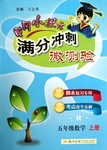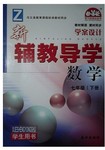题目内容
—Few pupils are as bright as he is, and he works very hard, too.
—It is no that he always gets the first place
- A.problem
- B.evidence
- C.wonder
- D.doubt
考查句型:It is no wonder that 难怪……,句意:很少学生会像他那样聪明,他也非常勤奋。难怪他总是得第一呢。故选C。

 一课四练系列答案
一课四练系列答案 黄冈小状元满分冲刺微测验系列答案
黄冈小状元满分冲刺微测验系列答案 新辅教导学系列答案
新辅教导学系列答案 阳光同学一线名师全优好卷系列答案
阳光同学一线名师全优好卷系列答案When former American President Bill Clinton traveled to South Korea to visit President Kim Young Sam, he repeatedly referred to the Korean president’s wife as Mrs. Kim. By mistake, President Clinton’s advisers thought that Koreans have the same naming customs as the Japanese. Clinton had not been told that, in Korea, wives keep their family names. President Kim Young Sam’s wife was named Sohm Myong Suk. Therefore, she should be addressed (称谓) as Mrs. Sohm.
President Clinton arrived in Korea directly after leaving Japan and had not changed his culture gears. His failure to follow Korean customs gave the impression that Korea was not as important to him as Japan.
In addition to Koreans some Asian husbands and wives do not share the same family names. This practice often puzzles English-speaking teachers when talking with a pupil’s parents. They become puzzled about the student’s correct last name. Placing the family name first is common among a number of Asian cultures.
Mexican naming customs are different as well. When a woman marries, she keeps her family name and adds her husband’s name after the word “de”, which means “of”. This affects how they fill in forms in the United States. When requested to fill in a middle name, they generally write the father’s family name. But Mexicans are addressed by the family name of the mother. This often causes puzzlement.
Here are a few ways to deal with such difficult situations: don’t always think that a married woman uses her husband’s last name. Remember that in many Asian cultures, the order of first and last names is reversed (颠倒). Ask which name a person would prefer to use. If the name is difficult to pronounce, admit it, and ask the person to help you say it correctly.
【小题1】The story of Bill Clinton is used to _____ .
| A.improve US Korean relations |
| B.introduce the topic of the text |
| C.describe his visit to Korea |
| D.tell us how to address a person |
| A.action plans | B.naming customs | C.travel maps | D.thinking patterns |
| A.continues to use her family name |
| B.uses her husband’s given name |
| C.shares her husband’s family name |
| D.adds her husband’s given name to hers |
| A.use her middle name | B.use her husband’s first name |
| C.ask her which name she likes | D.change the order of her names |
| A.Wives do not keep their family names in Japan. |
| B.Different countries have different naming customs in some way. |
| C.Naming custom will not cause any puzzle among Asian countries. |
| D.The naming custom in Korea is different from that of Japan. |